Published on October 14th, 2021 in the Sailing Newsletter SCUTTLEBUTT
Maximizing the performance of our boats requires the utilization of the sail trim adjustments and an understanding of the impact from each adjustment. Correctly trimming the sails through the range of wind speed and angle directly influences our position in the race, and while we may know what to do, it takes a scientist to truly understand the science.
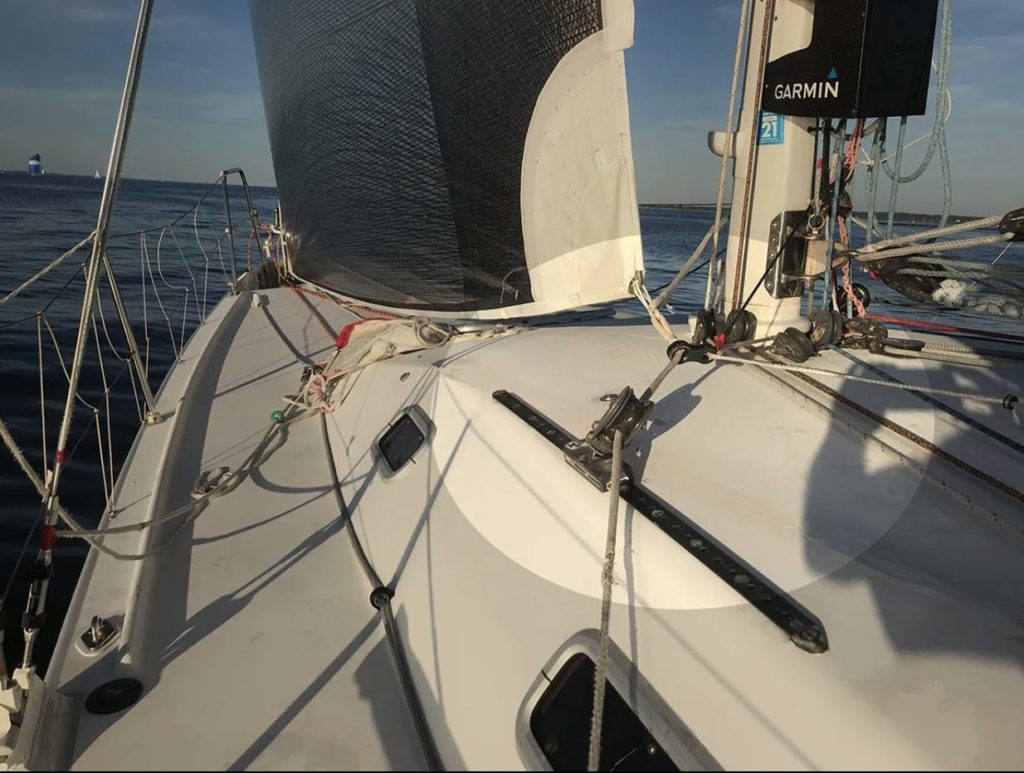
Scuttlebutt recently published two articles on the use of headsail inhaulers in which the explanation for how the mainsail and headsail interact needed clarity. We recruited experts to set the record straight, so what follows is a collaboration on the topic with Barry Hayes, Director of UK Sailmakers Ireland, and Dutch scientist Joop Slooff, author of The Science behind Sailing:
Setting the inhaulers is often discussed before a race yet rarely changed on any boat once set. Maybe it’s too hard to adjust them once the sail is trimmed, or maybe they aren’t considered once the gun goes off?
Neither case is an excuse not to adjust your inhaulers in the same way you adjust your headsail leads as they are an important tool that need to be adjusted as the wind speed changes between light and heavy.
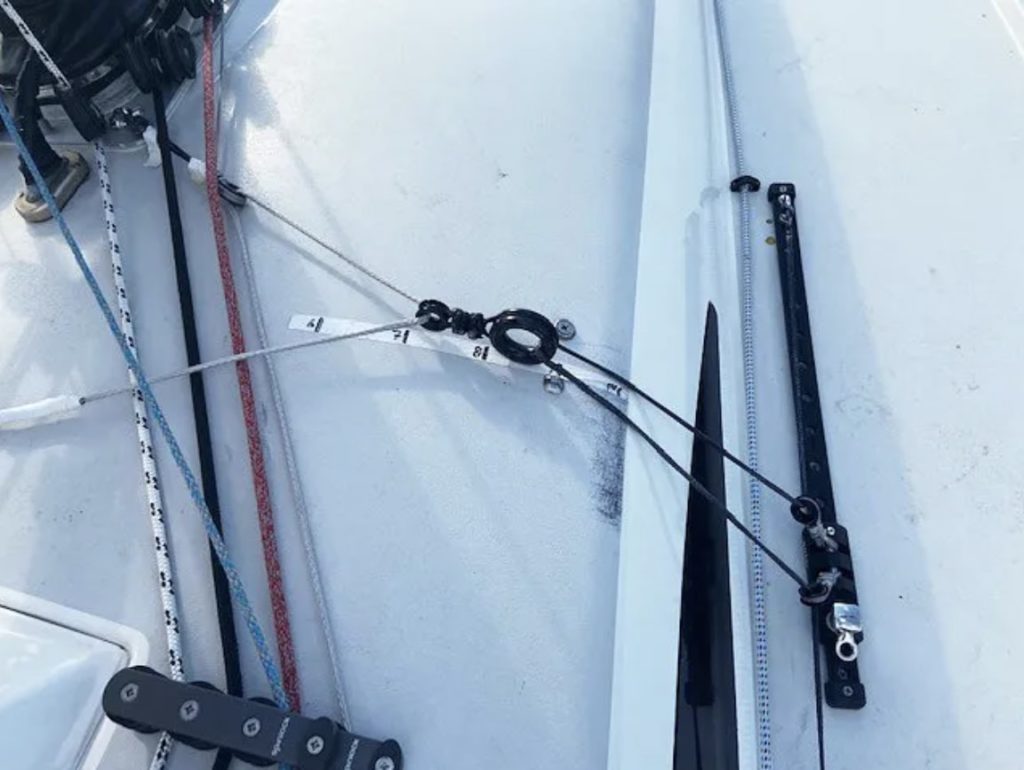
Inhaulers: how do they work?
Classic boats have long tracks on their decks along which jib cars give the proper sail shape. You know, the telltales are twittering in unison. But newer boats, particularly with non-overlapping jibs, can get an extra bit of speed by installing inhaulers that move the lead position inboard or outboard rather than just fore and aft.
Optimizing the width of the slot between the sails can do a lot for speed. Next time you sail behind some high-tech race boat, look at how close to the mast their jib is trimmed. If they are using such tight sheeting angles, there must be some good reason to do it…and that’s not because it makes you go slower.
In/out-haulers were invented to pull the clew of the genoa or headsail inboard or outboard to narrow or widen the slot between the main and headsail.
Before going into the details of in/outhauling it is useful to consider the main aspects of aerodynamically interacting fore- and mainsails. The mechanisms involved are basically the same as on an aircraft wing with high lift devices.
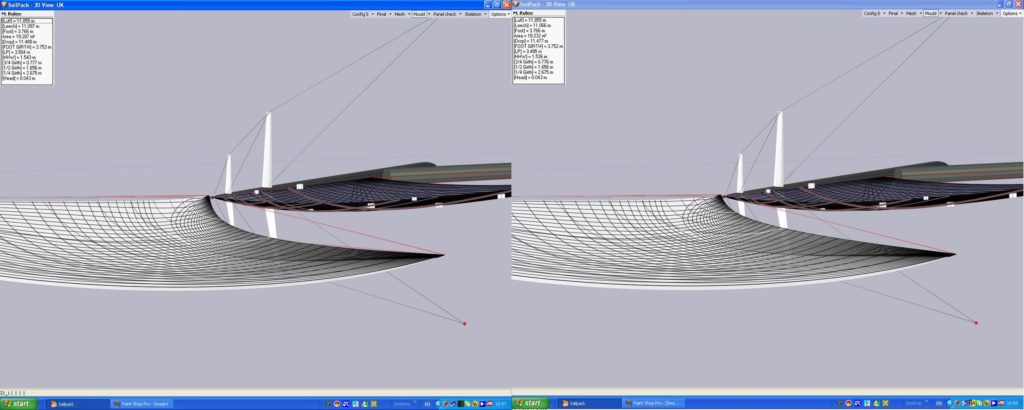
The two most important aspects are the upwash induced by the mainsail on the jib and the downwash induced by the jib on the mainsail. The upwash from the mainsail increases the lift generated by the jib and the downwash from the jib reduces the lift of the mainsail. More lift of the mainsail through a larger angle of attack//smaller sheeting angle increases the upwash on the jib and more lift of the jib reduces the lift of the main through increased downwash.
Other aspects are a high flow velocity in the slot between the leech of the jib and the front of the main, and little variation of the lift of the mainsail with variation of the apparent wind angle. The former allows the jib to carry more lift before it stalls. The latter is due to the fact that the jib acts as a flow directing device for the mainsail.
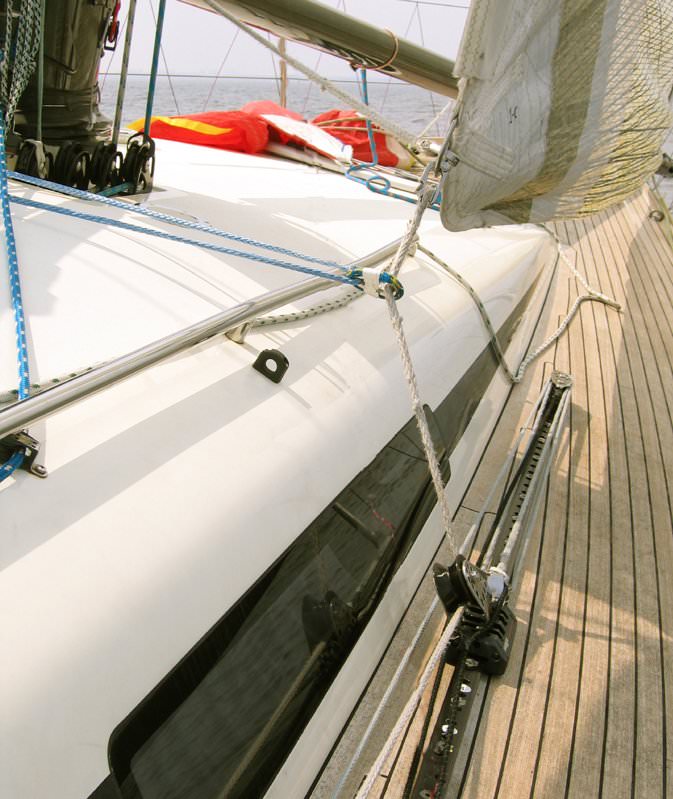
Inhauling has two main effects:
1. It reduces the sheeting angle of the jib giving more lift on the jib at a given apparent wind angle. The higher lift on the jib causes more downwash and less lift on the main.
2. For a fixed setting of the mainsail the difference between the sheeting angles of the headsail and the mainsail is also reduced. This causes a reduction of the maximum amount of lift (due to reduced overall camber) at large angles of attack (large apparent wind angles), but improves the lift/drag ratio at smaller apparent wind angles. The latter is important for sailing upwind in high wind speeds.
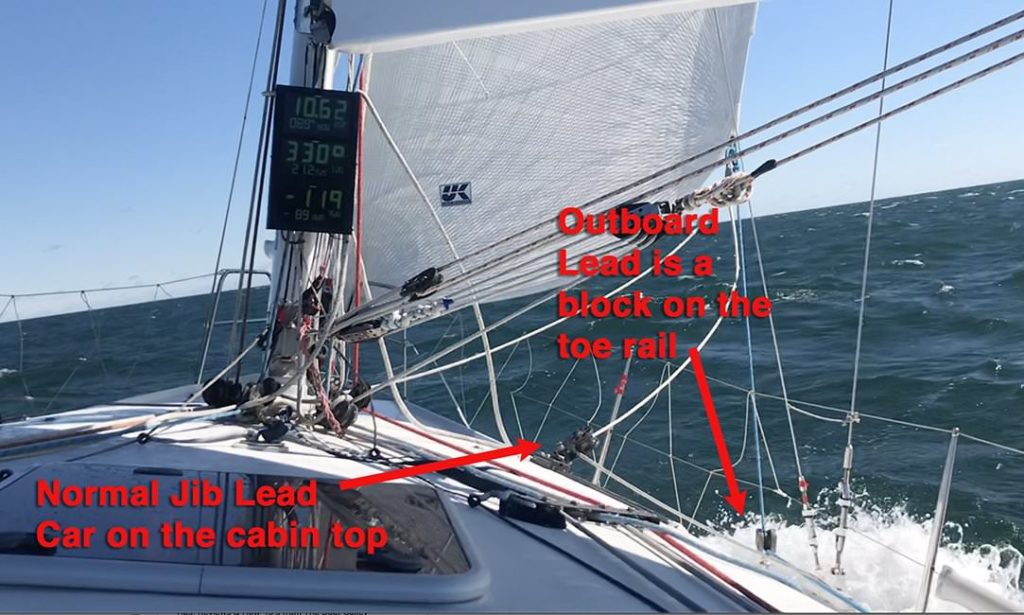
Outhauling has the opposite effect. It increases the difference between the sheeting angles and the maximum lift at large apparent wind angles but reduces the lift/drag ratio at small apparent wind angles.
Note that when inhauling a headsail to work effectively, both the main and headsail have to be adjusted in concert, so the difference of the sheeting angles is balanced for the actual apparent wind angle. The traditional set-it-and-forget-it approach isn’t good enough any longer.
That said, inhauling has both good and bad effects. Too much inhauler (too tight) causes the luff of the mainsail to start backwinding. You can use backstay to flatten the mainsail in 12+ knots to to reduce the amount of backwinding, but this is not possible to do in light airs below 8 knots. You will generally notice this effect happening in the 8-12 kt range on most boats.
PRO TIP: If you feel the boat is sailing sluggish, don’t be afraid to ease the inhauler a bit and see if that increases speed.
Knowing how much inhauler to apply is the key; it takes time and practice to figure it out on any boat. Don’t be afraid to play with your settings during a race or while doing a boat-on-boat pre-race tune-up.
Most boats have the tracks set on the deck at about 10 degrees or more, but you will find this inefficient for racing. We inhaul to close the sheeting angle down to 7 or 8 degrees. You can easily do this on any boat by measuring the sheeting point from the centerline out to the working angle of the sail.
PRO TIP: Keep an eye on the lines that control the inhauler. They can be under significant load and may be prone to wear. So overbuild instead of underbuild this system.
An important point for the uninitiated; sheeting the inhauler in shouldn’t be made with just any headsail. The sail must be designed to have extra twist in the leech to be inhauled harder. If you don’t have the twist designed into the leech, you will completely choke the slot, and you won’t be fast.
You will notice this when you inhaul, and the leech is straight from the clew to the head because the sail wasn’t designed with extra twist in the leech. Most inhauled headsails have twist between 13 to 15 degrees.
Precisely how much you inhaul and in what conditions are different for every boat.
Well, that’s the real question, isn’t it?
A boat with a long keel, for example, shouldn’t go inside 9 degrees, or the boat would stop. The speed of the boat through the water also greatly affects the inhauler. The Cape 31, for example, can go into 5 degrees as the balance of the lead allows the boat to do it.
It would help if you had a well-designed boat with the sails, keel, and rudder working perfectly together to do this angle. An older designed boat would not maintain this sheeting angle without the boat coming to a complete stop and sliding sideways. For example, a J/109 can have a sheeting angle of 7 degrees, whereas a First 44.7 would have a wider angle.
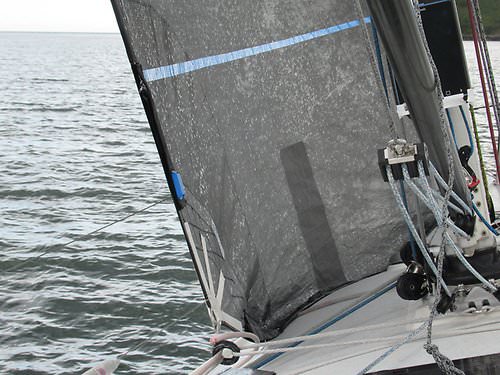

Always a good read thanks for the insight
Always a good read thanks for the insight